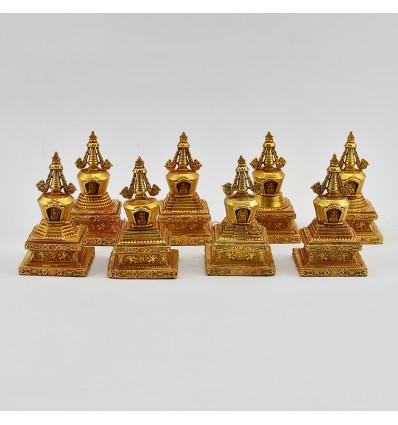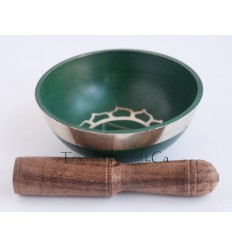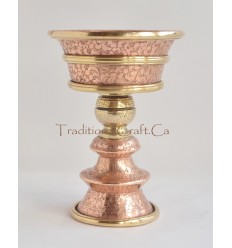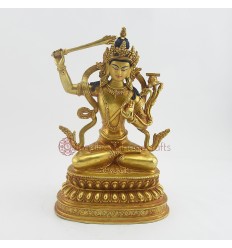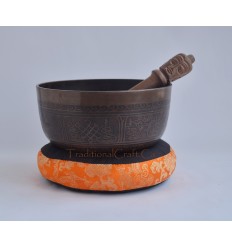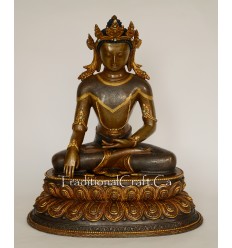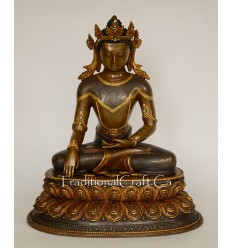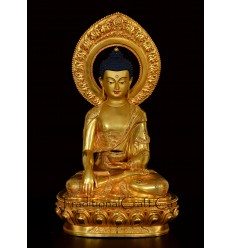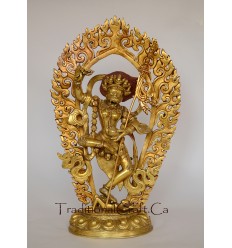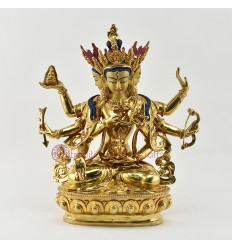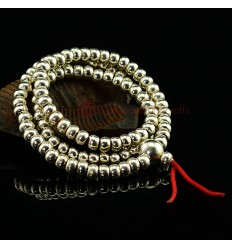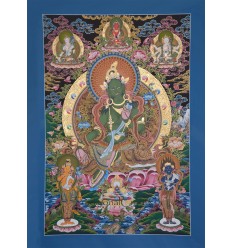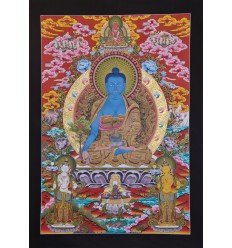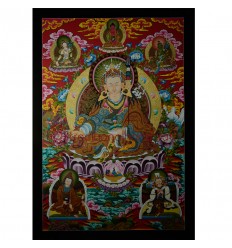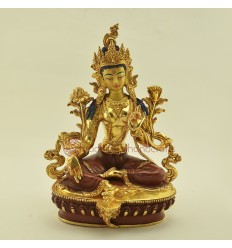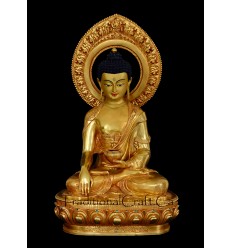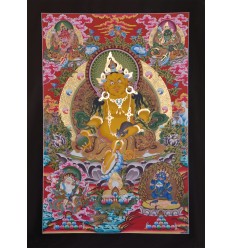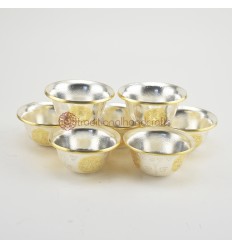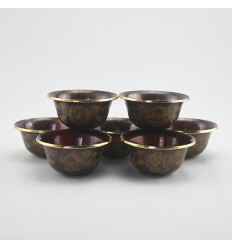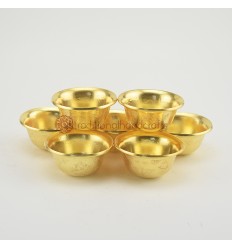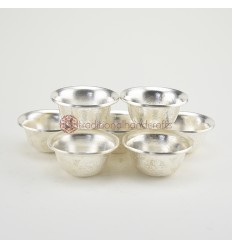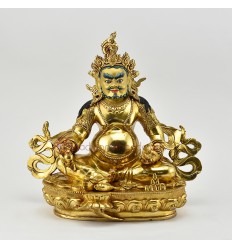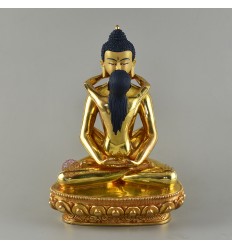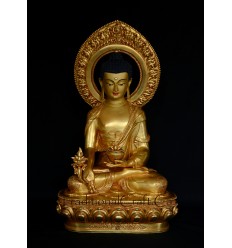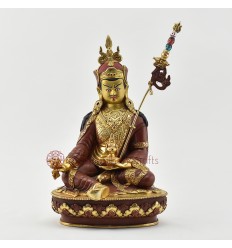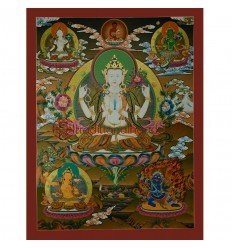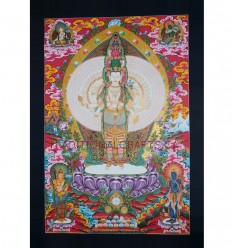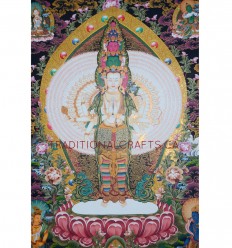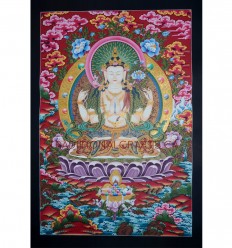No products
Product successfully added to your shopping cart
There are 0 items in your cart. There is 1 item in your cart.
Machine Made Copper Alloy with Gold Plated 4" 8 Piece Stupa / Chorten
761768141151
New
Traditional Machine Made Tibetan Buddhist Sculpture Religious Ritual Copper Alloy with Gold Plated 4" 8 Piece Stupa / Chorten / Chaitya From Patan, Nepal.
1 Item
Warning: Last items in stock!
The Eight Great Stupas (Chorten / Chaitya)
|
Name |
The Eight Great Stupas (Chorten or Chaitya) |
|
Height |
4” |
|
Width |
2.25” |
|
Depth |
2.25” |
|
Material |
Copper Alloy with Gold Plated |
|
Actual Weight |
1.808 Kg. |
|
Ships From |
Patan, Nepal |
|
Shipping Provider |
Express Shipping Service |
|
Shipping Time |
Usually ships within 48 hours. Allow 5 – 7 business days for deliver within worldwide. |
|
Insurance |
Insurance is included in the shipping cost. |
Stupa or Chorten – The Basis of Offering
Stupa (Chorten in Tibetan which means "the basis of offering") is an important religious monument in Tibet. This unique religious architectural form expresses significant religious symbolism and presents Buddha's physical presence. It generally consists of three parts; a whitewashed base, a whitewashed cylinder and a crowning steeple or shaft. The square base foundation, representing the Buddha's lotus throne, symbolizes earth, the state of solidity and five forces (faith, concentration, mindfulness, perseverance and wisdom.) The four stepped bases may or may not have openings. Above the base is a square or hexagon four stepped pedestal which represents The Buddha's crossed legs. Seated on the base is the cylinder, representing his torso. This symbolizes water, the state of fluidity and seven essential conditions of enlightenment: concentration, effort, equanimity, flexibility, mindfulness, joy and wisdom. Sometimes a Stupa has a shield like grillwork in one face. This allows relics of high lamas, statues and other items to be put inside. Between the cylinder and the crowning steeple, three is a square box, called Harmika, which represents the Buddha's eyes. It is considered to be the residence of the gods, symbolizing the eightfold noble path. The crowning steeple, the Buddha's crown, is usually hand - made of brass and/or covered with gold leaf. It is segmented into 13 tapering rings, a parasol and a twin symbol of the Sun and the Moon. Those rings, representing fire and the thirteen steps of enlightenment, successively symbolize ten powers of the Buddha and three close contemplations. The stylized parasol, representing wind, wards off all evil. At the top of the steeple is the twin symbol of the Sun and the Moon, which represent wisdom and method respectively. A flaming jewel may be found on the top of the twin symbol, symbolizing the highest enlightenment.
Stupa or Chorten or Chaitya, which represents the Buddhist Universe, is the Buddhist sanctuary, sometimes square and sometimes round, with spires or steps on the capital. A Stupa is a tower or steeple erected atop Hindu and Tibetan Buddhist temples. The Stupa is a symbol for the elementary organization of the universe according to Hindu cosmology. Each spire or step represents a heaven, the uppermost portion being a point which is supposed to be the highest peak of Mount Sumeru, a mythical mountain whence the Bodhichitta loses itself in sunya. It is composed of four parts (from the base, up), symbolizing the five tattwas, or elements: Earth, Air, Fire and Water. On the four sides of the Stupa or Chaitya the figures of four Dhyani Buddhas; Akshobhya, Ratna Sambhava, Amitabha and Amoghasiddhi are placed. The place of Vairochana is in the center. In some Stupa or Chaitya Vairochana is placed to the east along with Akshobhya.
Eight Types of Stupas Chorten
In Tibetan tradition there are eight main types of Stupas(Chorten), each of those is related to a particular event in the life of Buddha Shakyamuni: Birth, Enlightenment, Turning of the Wheel of Dharma, Performance of miracles, Descent from Tushita Heaven, Reconciliation of the Sangha, Prolongation of life, Parinirvana.
Although the general structure of all the Stupas is the same (except Parinirvana Stupa), each Stupa has its own specific features – Stupas differ from one another by the exterior and shape of steps between the lion throne and vase (Parinirvana Stupa has no steps there at all).
1. The Lotus Stupa
The Louts Stupa is related to the birth of Shakyamuni. Right after birth Buddha took seven steps in each of the four directions – East, South, West and North. From Buddha’s steps lotuses sprang in each direction.
The first Lotus Stupa was built in Lumbini, Nepal – The birthplace of Buddha, during his lifetime. Steps above the lion throne are rounded and decorated with the lotus petals.
2. The Enlightenment Stupa
The Enlightenment Stupa symbolizes Buddha’s attainment of enlightenment under the Bodhi tree. He realized that every living being can achieve Enlightenment. Also this type of Stupa known as a symbol of the victory over demon Mara, i.e. over ignorance and all other poisons or defilements of the mind. Enlightenment Stupa was built in Bodhgaya, India, where the Buddha achieved Enlightenment.
3. The Stupa of Turning the Wheel of Dharma
The Stupa of Turning the Wheel of Dharma or the Stupa of many favorable doors (gates). After attaining Enlightenment, the Buddha for the first time turned the Wheel of Dharma, i.e. delivered his first teachings. It took place in the Deer park, in Saranath(Varanasi, India), where the Buddha gave the teaching of the Four Noble Truths.
Stairs above the link throne are decorated with open doorways, symbolizing the opening of the doors of Dharma.
4. The Stupa of Great Miracles
The Stupa of Great Miracles was built in Shravasti and commemorates various miracles displayed by the Buddha every day for fifteen days. With the help of miracles and intellectual disputes, he defeated Maras (demons) and heretics, demonstrating the level of his attainment.
Central part of the steps above the lion throne is extended.
5. The Stupa of Descent from Tushita Heaven
After Buddha’s mother passed away, she was reborn in Tushita heaven. In gratitude for her kindness, the Buddha ascended to Tushita heaven and gave her the Dharma Teaching. The Stupa of descent from Tushita heaven symbolizes the Buddha’s return from the celestial realms in order to continue teaching the path to Awakening.
This Stupa originated in Sankashya (also called Sankassa or Sankasya), Uttar Pradesh of India. Nowadays it is a desert place with the ruins of a Hindu temple. In the central part of the steps, above the lion throne, there are stairs symbolizing Buddha’s descent from Tushita heaven.
6. The Stupa of Reconciliation
When envy and controversies appeared within the Sangha (community of disciples), the Buddha reunited the Sangha, and in order to commemorate this event the Stupa of Reconciliation was erected. Above the lion throne of the Stupa there are four octagonal steps with equal sides.
7. The All-Victorious Stupa
After one of the Buddha’s followers had beseeched him not to pass away Buddha prolonged his life by three months. Unlike other types of Stupas, the All-Victorious Stupa has only three rounded steps above the lion throne (instead of four rectangular).
8. The Paranirvana Stupa
The Paranirvana Stupa is to the Buddha’s passing into Maha Parinirvana. It took place in the city of Kushinagar. Laying on his right side and being in a meditative state, Buddha preached his disciples about attaining Enlightenment, and the passed into Maha Parinirvana.
This Stupa by its shape differs from other Stupas. It has no steps above the lion throne, and right on the top of the throune there is a bell-shaped vase (wisdom symbol).
About this Ritual Item
This Stupa or Chorten is made from copper alloy with gold plated. The Eight Great Stupas (Chorten/Chaitya) were hand crafted in Patan, Nepal by master artisans of the Shakya clan who are considered among the best in the world. These craftsmen are the modern heirs to a centuries-old tradition of creating sacred art for use in temples and monasteries. The fine metalworking techniques have been passed down from generation to generation since ancient times.
No customer comments for the moment.


